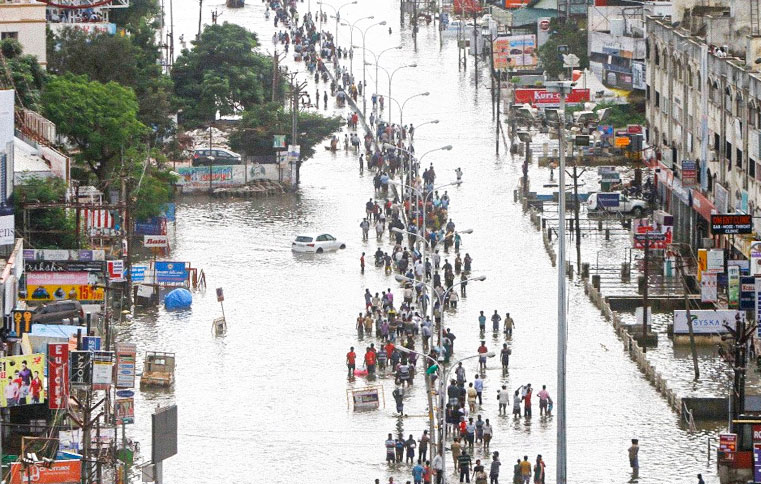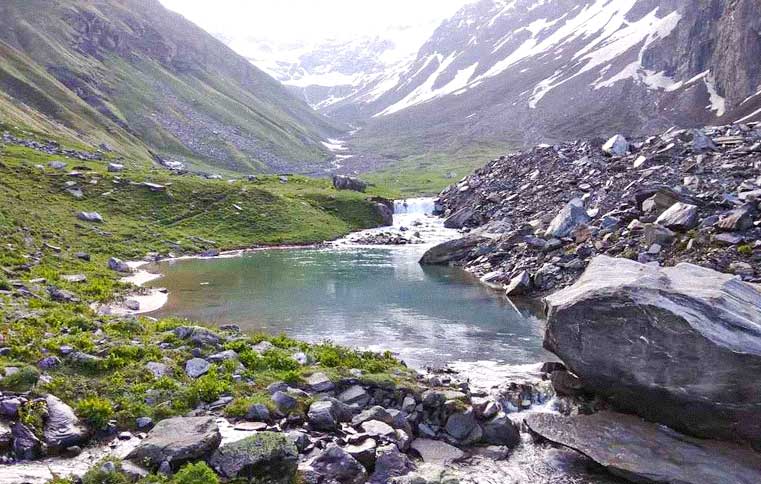How are tropical cyclones named?
By: Saurabh Kulkarni | Date: 20th July 2020
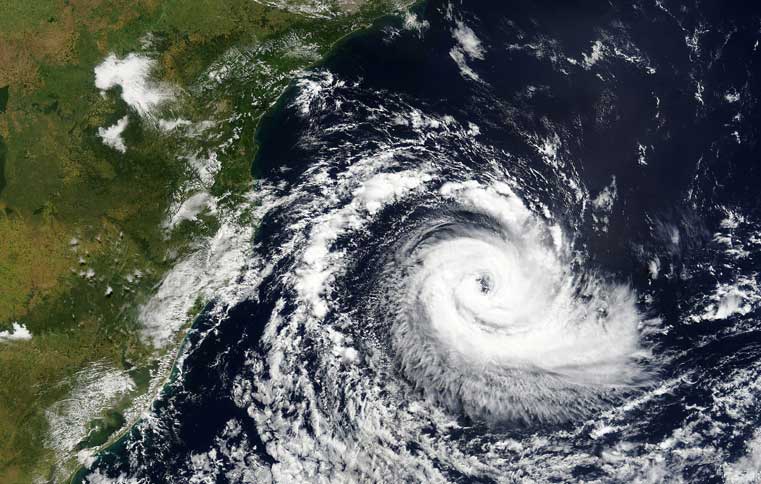 Image Source: Visible Earth/NASA
Image Source: Visible Earth/NASA
2020. The first year of the new decade has posed serious questions through calamities after calamities which is resetting the way we humans live. It has also exposed how ready we are if faced by a disaster.
In the later half of May 2020 within a fortnight’s time India witnessed two deadly tropical cyclones- ‘Amphan’ & ‘Nisarga’.
It led the people to observe these two disasters closely and also ask the curious question - How are these cyclones named?
“What's in a name? that which we call a rose, by any other name would smell as sweet.”
― William Shakespeare, Romeo and Juliet
Tropical cyclone is the one thing where this Shakespeare’s philosophy gets it wrong. The name of the tropical cyclone matters and to a large extent.
Natural disasters such as cyclones are inevitable, and all that we can do is manage the destruction and lessen its after effects.
Various disaster relief methodologies and management are put into use when the cyclone strikes. But the basic yet pertinent point is to not to allow the panic and confusion to spread amongst the public.
One of the simplest and effective ways is the naming of the tropical cyclone.
“Why name a tropical cyclone?”, you would ask. There quite a few reasons for that.
- Awareness about the development of the tropical cyclones among public
- Focused coverage of the tropical cyclone in media both locally and globally
- Confusion does not exist when there are multiple cyclones occurring in same geographic area
- Helps in communicating the warnings to a wider audience just by calling out the name
- Psychologically, people remember the cyclone and its consequences if named and also the lessons learned from facing such harsh wrath of nature
In order to name a tropical cyclone, there are firm rules laid down by the Regional Specialized Meteorological Centres (RSMC) which are also responsible for sharing of information, bulletins, updates along with warnings and meteorological information on all tropical cyclones, hurricanes, typhoons everywhere in the world.
There are a total six RSMCs in the world based on the geography as shown below.
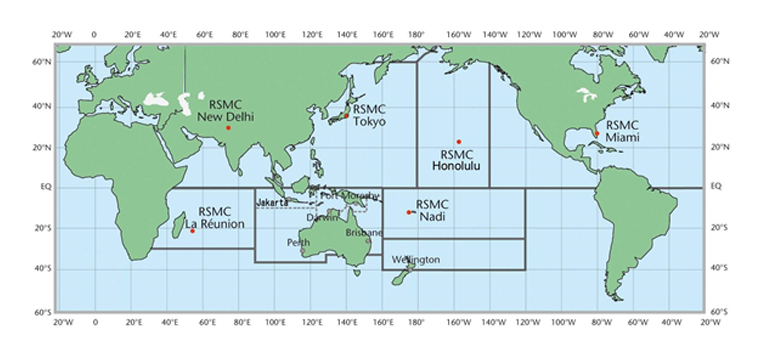 Image Source: Location of Tropical Cyclone RSMCs
Image Source: Location of Tropical Cyclone RSMCs
The region that borders the Bay of Bengal and the Arabian Sea comes under the Regional Specialized Meteorological Centre (RSMC) of Tropical Cyclones- New Delhi i.e., Indian Meteorology Department (IMD).
This RSMC is assigned the responsibility of naming the tropical cyclones in that region which first included eight countries- Bangladesh, India, Maldives, Myanmar, Oman, Pakistan, Sri Lanka and Thailand.
The history of naming the cyclones in the North Indian Ocean region was not systematic up until 2004 when the World Meteorological Organization (WMO) and the Economic and Social Commission for Asia and the Pacific (ESCAP) panel which included above countries agreed on following a strict procedure for naming a tropical cyclone in this particular region.
Thereafter in 2018 Iran, Qatar, Saudi Arabia, the UAE and Yemen were included in the panel.
Each panel member country suggests an equal number of names and sends it to WMO/ESCAP which finalises the list.
The list given below was formed in 2004 and the cyclone Amphan that hit West Bengal in India recently will be the last to be used from this list and a new list will be formed with the help of the suggestion from member countries.
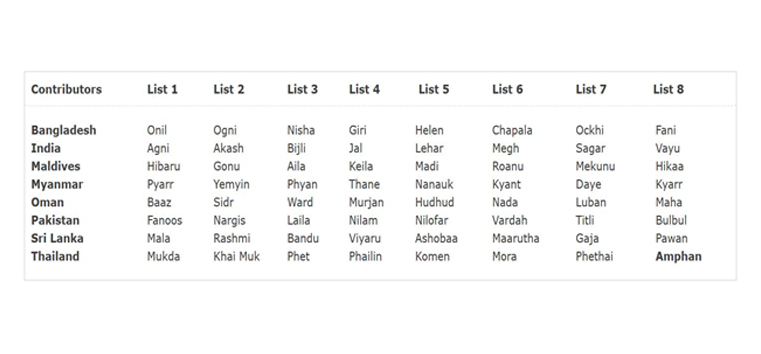 Image Source: Last List of Cyclone names
Image Source: Last List of Cyclone names
Following is the procedure which is carried out to name a tropical cyclone (from official WMO)-
- The panel member’s name is listed alphabetically country wise, starting with Bangladesh followed by India, Maldives and so on.
- The names will be used sequentially column wise.
- The first name will start from the first row of column one and continue sequentially to the last row in column thirteen.
- The names of tropical cyclones over the north Indian Ocean will not be repeated, once used it will cease to be used again. The name should be new. It should not be there in the already existing list of any of the RSMCs worldwide including RSMC New Delhi.
- The name of a tropical cyclone from the South China Sea which crosses Thailand and emerges into the Bay of Bengal as a Tropical cyclone will not be changed.
The table below represents the newly finalised list of Cyclone names as suggested by 13 member countries in the North Indian Ocean region. Each country gave 13 names and in total 169 names.
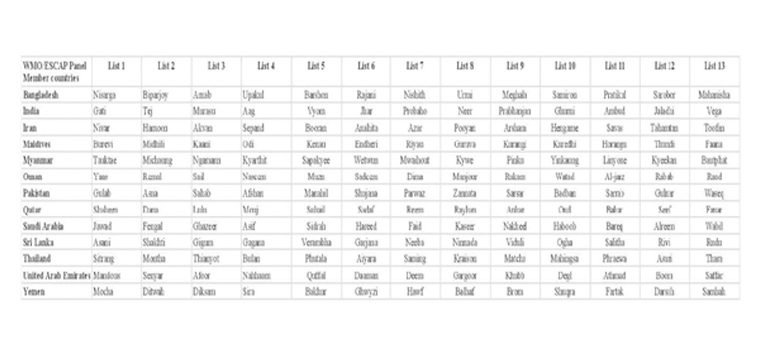 Image Source: Current list of Cyclone names- April 2020
Image Source: Current list of Cyclone names- April 2020
The lists for the Indian region are used sequentially and are not rotated every few years like the Atlantic and Eastern Pacific lists. Once the lists are exhausted, the panel meets again, to decide on a list of names.
Only in case the destruction caused by the storms are on a huge scale such that it seems to brew unwanted sensitivity and cause trauma if the same storm name is used, it is discarded from the list.
These suggestions can also come from the general public which needs to send it to IMD keeping in mind the two fundamental criteria given below-
- The name should be short and readily understood when broadcast
- The names must be culturally sensitive and not convey some unintended and potentially inflammatory meaning
The names suggested should be sent to the following address:





